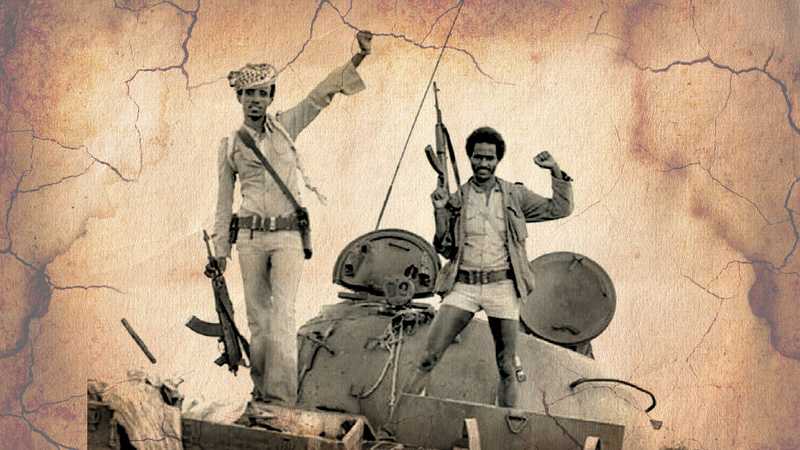The Battle of Afabet – EPLF Operation to Destroy Nadew Command
17 Mar, 1988 - 20 Mar, 1988
The Battle of Afabet brought about the annihilation of the Ethiopian Army's Nadew Command. EPLF's growing military prowess and strategic acumen became evident.
In March 1988, the Eritrean People’s Liberation Front (EPLF) launched a major offensive against the Ethiopian army’s Nadew Command at Afabet. This operation, spanning from March 17th to 19th, marked a turning point in the Eritrean struggle for independence.
The EPLF’s well-coordinated, multi-pronged attack resulted in a decisive victory, shattering the myth of the Nadew Command’s invincibility and shifting the balance of power in favor of the Eritrean forces.
EPLF’s battle plan consisted of six angles of attack involving a total of 10,400 fighters against Ethiopia’s 18,000.
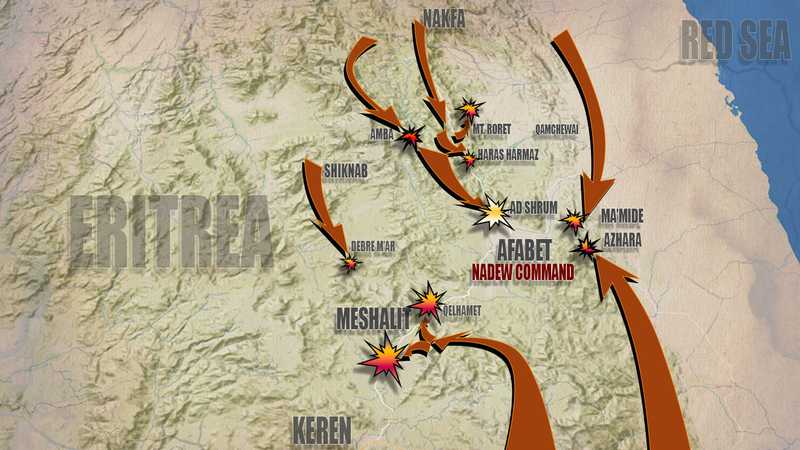 Map showing the battle plan of EPLF’s military operation to destroy Nadew Command
Map showing the battle plan of EPLF’s military operation to destroy Nadew Command
The First Day: March 17th
The operation commenced on the morning of March 17th with a five-pronged assault on the Nadew Command’s positions at Afabet. Despite fierce resistance from the Ethiopian army, the EPLF fighters managed to push the enemy out of their first and second lines of defense on the frontlines.
Simultaneously, off-front line units advanced from various directions, including the 52nd Division that was tasked with securing the Afabet-Keren mountain pass, a crucial supply line for the Ethiopian forces. These units successfully achieved their objectives on schedule.
The 52nd Division engaged the expected Ethiopian reinforcements dispatched from Keren to Afabet at the narrow Meshalit pass. This strategic move prevented the enemy from bolstering their defenses in Afabet, setting the stage for the rest of EPLF units’ continued advance.
The Second Day: March 18th
On March 18th, the EPLF intensified its attacks from all five angles. Despite facing severe thirst, hunger, and fatigue, the Eritrean fighters seized weapons and ammunition from the enemy, swiftly gaining control over large areas. The relentless assaults disrupted the Ethiopian army’s command and control, forcing them to retreat in disarray.
The fiercest battles took place in Moga’e, Qetarit, and Qamchewai, where the enemy commanders had descended from their mountain and hill positions to the rivers and valleys. Realizing that their scattered infantry would be unable to regroup and defend their heavy weapons’ rear base, the Ethiopian commanders decided to withdraw their tanks and vehicles from these areas before they could be captured.
A convoy of 70-80 tanks and other vehicles departed for Afabet in broad daylight. However, at 15:30, the EPLF tankers ambushed this convoy as it climbed the Ad Shrum pass. With precision, an EPLF tank destroyed a BM-21 Rocket Launcher vehicle at the bottleneck and knocked out a tank with a second shot. This created a massive jam on the road, exposing most of the 29th Mechanized Brigade’s vehicles and tanks, known as the “Zerai Deres” brigade, to destruction or capture.
Faced with no alternative, Major General Wobetu Tsegaye, commander of the 2nd Revolutionary Army, ordered the burning of all immobilized property and weapons on the pass to prevent their capture by the EPLF. The gravity of the situation was underscored by the fighter pilots’ radio transmission, “Aye Mengist Siwedq’ (When a government collapses!),” as they carried out the order to destroy their own side’s assets.
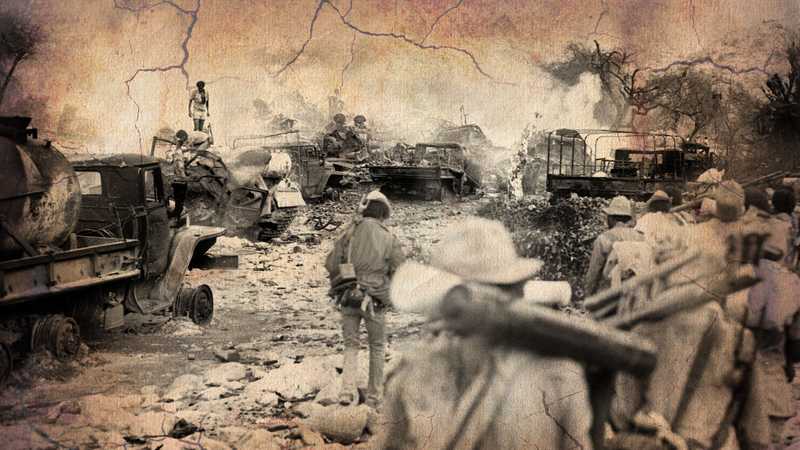 Burnt tanks and other military vehicles from Nadew Command at Ad Shrum
Burnt tanks and other military vehicles from Nadew Command at Ad Shrum
The devastating defeat of the Ethiopian army was most evident at the Ad Shrum pass on March 18th. The EPLF’s frontline forces had pushed the enemy back approximately 40 km, destroying two-thirds of their capacity. EPLF units on both the right and left wings of the attack seized control of areas surrounding Afabet overnight. Simultaneously, the 52nd Division, positioned on the Keren-Afabet line also to block the escape route from Afabet, engaged in fierce combat against the substantial enemy reinforcements arriving from Keren. As a result, the Ethiopian army found itself surrounded and besieged from all directions, converging on Afabet.
The Third Day: March 19th
The final assault began at 5:30 am on March 19th, with EPLF forces closing in on Afabet from various angles. Despite a brief resistance from the battered and demoralized Ethiopian army, they soon began to retreat under the EPLF’s relentless pressure. By 9 am, EPLF fighters entered Afabet from the east and southeast, while forces advancing from the north and northwest completed their mission and entered the town by 10 am.
During the intense close-quarter fighting to capture Shabai Mender and secure control of Afabet, the 87th Battalion of the 61st Brigade captured three Soviet advisers along with several Ethiopian officers.
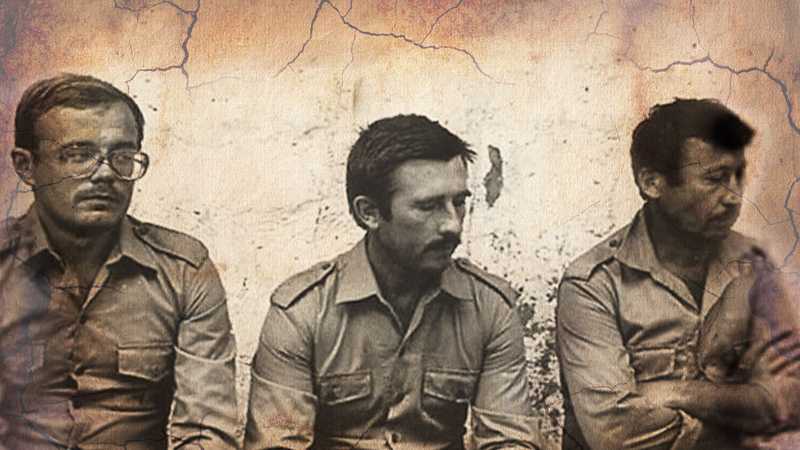 Captured Soviet Union officers who were advising the Ethiopian Army at Nadew Command
Captured Soviet Union officers who were advising the Ethiopian Army at Nadew Command
As the remaining Ethiopian troops attempted to flee Afabet and the surrounding areas towards Keren, escaping to the mountains with some tanks and vehicles, they fell into ambushes set by the EPLF’s 52nd Division. Abandoning their equipment, they scattered and dispersed towards the Gizgiza, Qelhamet, and Hikano areas.
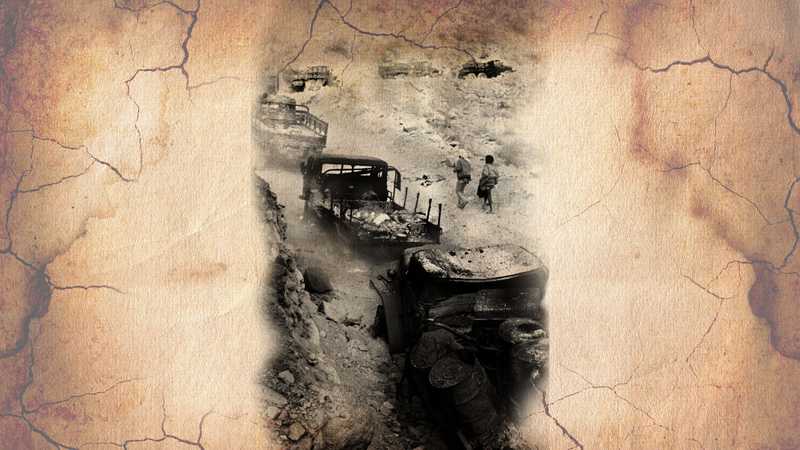 Burnt column of military vehicles from Nadew Command was ambushed by EPLF
Burnt column of military vehicles from Nadew Command was ambushed by EPLF
The final battle of the Operation to Destroy Nadew Command concluded in the afternoon of March 19th in the Gizgiza area. EPLF commander Gebregziabher Andemariam a.k.a. Gerezgiher Wuchu had told his unit before the attack, that they had been invited to the funeral of Nadew Command to participate in its “burial.” It indeed became so: one of the Derg regime’s most experienced and powerful army commands was annihilated.
 EPLF commander Gebregziabher Andemariam a.k.a. Gerezgiher Wuchu
EPLF commander Gebregziabher Andemariam a.k.a. Gerezgiher Wuchu
Conclusion
The EPLF’s successful Operation to Destroy Nadew Command marked a significant milestone in the Eritrean struggle for independence. After a decade of intense military engagements, the EPLF transitioned from a defensive stance on the Nakfa Front to a strategic offensive.
This decisive victory not only shattered the myth of the Nadew Command’s invincibility but also demonstrated the EPLF’s growing military prowess and strategic acumen. The operation’s success laid the foundation for further advances and ultimately contributed to Eritrea’s hard-fought independence in 1993.
EPLF opened a new front in the mountain range near Meshalit. They were facing in the direction of Keren. Would it be next?
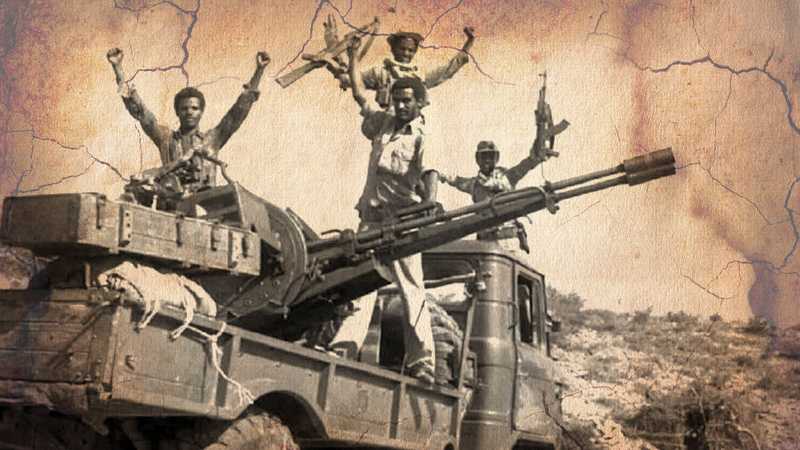 E.P.L.F. fighters aboard a captured Ethiopian truck with a 23mm machine gun
E.P.L.F. fighters aboard a captured Ethiopian truck with a 23mm machine gun

